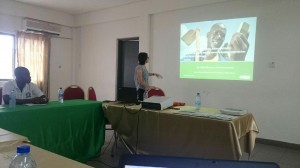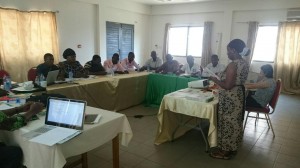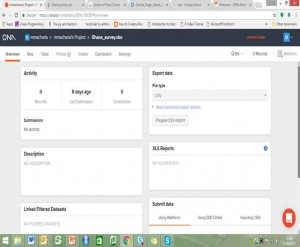How do soybean farmers get information?
11 April 2017:At the end of March the GALA team travelled to Tamale in Northern Ghana to help deliver training on data collection to 10 enumerators.
As a result, next week the GALA project starts conducting intra-household surveys at 300 farms in five districts in the Northern region of Ghana. The intra-household survey interviews up to 4 adult family members, from randomly selected household. In this case there is a specific focus on improved legume technologies and in particular for soybean farming.
The enumerators were recruited through the University of Development Studies. This will build on a similar survey carried out earlier in the year in Tanzania delivered with Sokoine University of Agriculture.
By the end of the two-day training, the enumerators;
- Understood the objectives of the project and how they relate to the current survey
- Were introduced to procedures and approaches of collecting quality survey data
- Understood the data collection tool and the questions
- Were introduced to mobile data collection using tablets
As a part of the program of training the enumerates even had the opportunity to test the data collection tool with members of the local farming community. The feedback obtained from the workshop will be used to further enhance and refine the tool.
Martin Macharia, part of the team of trainers, said “The enumerators were very engaged in the training. They made lots of helpful suggestions about how to improve the tool. They came up with prompts to be added to pages that helped identify the range of acceptable answers for a question. They were also really attuned to the communities in which they will be collecting data.
Cultural issues came to the fore in the discussion on how to complete a question on land ownership. In Northern Ghana the land is owned by the chief, and families are merely custodians. Discussions arose and consensus was reached on how to define land ownership and use in this context. We changed the question and the options for recording the land available to the household.”
Enumerator training in progress at the University of Development Studies in Tamale, Ghana
Whilst the survey tool is programmed in English the questions are delivered in either Dagbani or Gonja, the most commonly spoken local languages in the Northern Region.
The Tanzania survey was the first time that CABI Africa had used mobile data collection – and starting with an intra-household survey was complex first outing. Programming the software for the tablets took around 3 weeks. However, this process was much quicker for Ghana and it was programed and tested within a week.
Over the next few weeks the surveys will be conducted in Northern Ghana. This will collect information on farming practices in particular relating to soybean. This will build into a body of knowledge that will help explain the effectiveness of different communication approaches in delivering agricultural information to small-scale farmers. It will also help us to reflect on changes in farmer’s attitudes and behaviours with regard to improved agricultural practices.
Using a mobile data collection tool makes for more efficient and effective data collection. First data is only entered once – and so there is no chance of transcription errors. Second the data is updated to the cloud each time the device is on-line – so this means that the data collection can be monitored in real time by the team in Nairobi. If an enumerator is not filling in the information correctly steps can be taken immediately to rectify the situation. The tool also has checks built to make sure that logic errors don’t creep in.
Since the work in Tanzania GALA has moved to a new Online data aggregation platform called ONA. This has great additional features for household mapping by capturing GPS.
Martin continues “In the training field trip we told the enumerators to stick to an area bounded by the river. One collected data from the other side of the river – but gathering the GPS coordinates meant that this error was quickly flagged. This demonstrated very effectively the way we can monitor data collection in real time.
Screen grabs from the data collection tool







